Consumer Behavior Survey and Analysis on Colgate Products
VerifiedAdded on 2023/06/08
|15
|2078
|251
Report
AI Summary
This report presents a comprehensive analysis of a consumer behavior survey conducted on Colgate, a globally recognized oral hygiene brand. The survey, based on a sample size of 38 recent purchasers, explores various aspects of consumer behavior, including motivations for purchase, pre- and post-purchase perceptions, emotional associations, family adoption, age group demographics, net promoter scores, brand preferences, and perceived brand attributes. The findings reveal that brand name and ease of availability are primary motivators, with a positive brand image and high reliability perceptions. The report also examines the competitive landscape, highlighting Colgate's strong position despite the presence of competitors like Close up. The analysis provides insights into the key drivers behind consumer choices, such as fresh breath and white teeth, and identifies areas for improvement, including strategies to increase family adoption and enhance the net promoter score. The report leverages consumer behavior theories to support the analysis, offering valuable implications for Colgate's marketing and brand-building strategies.
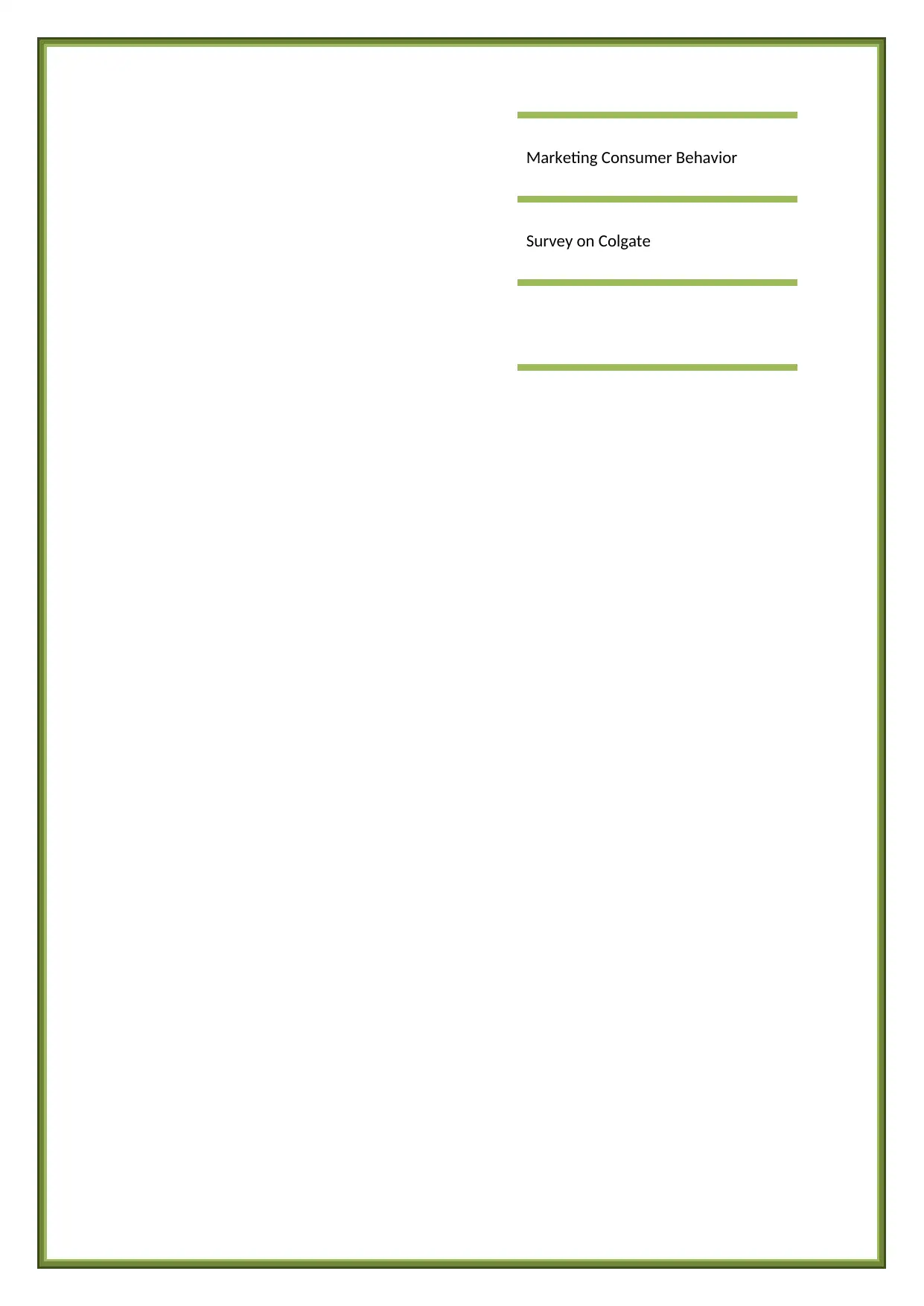
Marketing Consumer Behavior
Survey on Colgate
Survey on Colgate
Paraphrase This Document
Need a fresh take? Get an instant paraphrase of this document with our AI Paraphraser

Goal of the Survey
Colgate is a known all across the globe as an umbrella brand which is used to purchase
the products related to oral hygiene, toothpastes, toothbrushes, mouthwashes and
dental floss. The underlying idea of the survey conducted on Colgate is to understand
the motivation, perception, attitude, culture and the individual lifestyle of people who in
the recent times have purchased the product (Esch et. al., 2009).
Sample Size
The survey has been conducted with a Sample size of 38 people, and these are the
people who have recently purchased the company’s product.
Data Analysis and Key Findings
This section will discuss the findings of the data from the collected responses and
analyse to gain insight on the consumer behaviour while making their choice in picking
Colgate.
Question 1:
The first question has been designed to understand the reason from the sample
population as to what motivates them or urges them to buy products of Colgate. The
options are provided to the sample on the basis of brand attributes of Colgate and the
factors which makes much sense for the respondents. The above analysis shows that
out of 6 factors of motivation, maximum people engage with Colgate due to the brand
name, and the second reason is the ease of availability.
Brand name is the biggest motivation to buy the products of Colgate, this implies that
the brand which started selling products since 1873 has created a good brand name in
the market (Netemeyer et. al., 2004). The people believe in the offering of the company
and associate with the brand name and image of the company. The second reason of
ease of availability is an indication of the effective supply chain management of the
company. The downside is that the marketing and promotion strategy of Colgate is not
highly effective in motivating people to buy the product.
Colgate is a known all across the globe as an umbrella brand which is used to purchase
the products related to oral hygiene, toothpastes, toothbrushes, mouthwashes and
dental floss. The underlying idea of the survey conducted on Colgate is to understand
the motivation, perception, attitude, culture and the individual lifestyle of people who in
the recent times have purchased the product (Esch et. al., 2009).
Sample Size
The survey has been conducted with a Sample size of 38 people, and these are the
people who have recently purchased the company’s product.
Data Analysis and Key Findings
This section will discuss the findings of the data from the collected responses and
analyse to gain insight on the consumer behaviour while making their choice in picking
Colgate.
Question 1:
The first question has been designed to understand the reason from the sample
population as to what motivates them or urges them to buy products of Colgate. The
options are provided to the sample on the basis of brand attributes of Colgate and the
factors which makes much sense for the respondents. The above analysis shows that
out of 6 factors of motivation, maximum people engage with Colgate due to the brand
name, and the second reason is the ease of availability.
Brand name is the biggest motivation to buy the products of Colgate, this implies that
the brand which started selling products since 1873 has created a good brand name in
the market (Netemeyer et. al., 2004). The people believe in the offering of the company
and associate with the brand name and image of the company. The second reason of
ease of availability is an indication of the effective supply chain management of the
company. The downside is that the marketing and promotion strategy of Colgate is not
highly effective in motivating people to buy the product.

Question 2:
The second question has been drafted to understand the Pre-purchase behaviour or
perception of the customers with Colgate. This is helpful in evaluating their post
purchase behaviour after using the product (Vyas, 2018). 60% of the respondent had a
positive perception about the product of Colgate, which is a very healthy sign for the
company. As it already has a positive brand image in the market which evokes positive
emotion of the people.
Question 3:
The question here has been designed to evaluate the post purchase behaviour of the
customers after they have tried and tested the product. This helps in understanding the
change in the perception of the customers after actually trying the product (Rossiter,
2014). The Positive and noteworthy thing here is 57.89% of people felt positive after
trying the product and almost 18.42% people felt very positive with the company’s
offering. Another noteworthy thing is that 21% of the respondent felt neutral even after
trying the product, this implies that product did meet their expectation at some levels, if
not at all. The learning here is that the company has to leverage on this positive
sentiments of the customers and push the product to these customers.
Question 4:
The next question is based on understanding the emotions of the customers in making
their choice with Colgate. The question will help in assessing the parameters with which
the customers most strongly associate in the longer run. The result and the findings are
pretty encouraging for Colgate. The highest number of respondent (42%) feel that the
products of the company are highly reliable, thus in their mind they have a very reliable
image of the company. The implication here is that any new product which gets
launched in the market, people would buy it because they believe the product and the
The second question has been drafted to understand the Pre-purchase behaviour or
perception of the customers with Colgate. This is helpful in evaluating their post
purchase behaviour after using the product (Vyas, 2018). 60% of the respondent had a
positive perception about the product of Colgate, which is a very healthy sign for the
company. As it already has a positive brand image in the market which evokes positive
emotion of the people.
Question 3:
The question here has been designed to evaluate the post purchase behaviour of the
customers after they have tried and tested the product. This helps in understanding the
change in the perception of the customers after actually trying the product (Rossiter,
2014). The Positive and noteworthy thing here is 57.89% of people felt positive after
trying the product and almost 18.42% people felt very positive with the company’s
offering. Another noteworthy thing is that 21% of the respondent felt neutral even after
trying the product, this implies that product did meet their expectation at some levels, if
not at all. The learning here is that the company has to leverage on this positive
sentiments of the customers and push the product to these customers.
Question 4:
The next question is based on understanding the emotions of the customers in making
their choice with Colgate. The question will help in assessing the parameters with which
the customers most strongly associate in the longer run. The result and the findings are
pretty encouraging for Colgate. The highest number of respondent (42%) feel that the
products of the company are highly reliable, thus in their mind they have a very reliable
image of the company. The implication here is that any new product which gets
launched in the market, people would buy it because they believe the product and the
⊘ This is a preview!⊘
Do you want full access?
Subscribe today to unlock all pages.

Trusted by 1+ million students worldwide
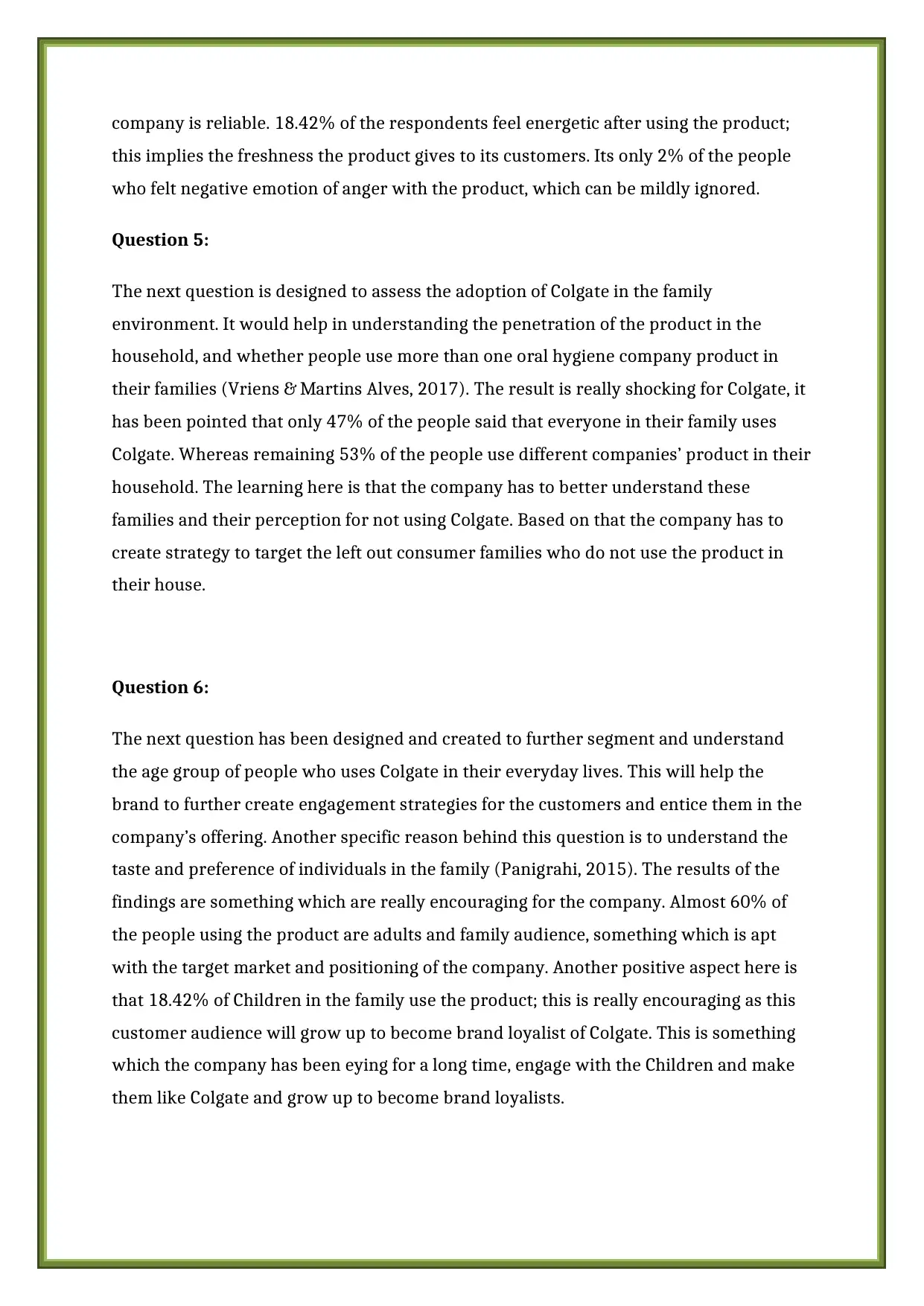
company is reliable. 18.42% of the respondents feel energetic after using the product;
this implies the freshness the product gives to its customers. Its only 2% of the people
who felt negative emotion of anger with the product, which can be mildly ignored.
Question 5:
The next question is designed to assess the adoption of Colgate in the family
environment. It would help in understanding the penetration of the product in the
household, and whether people use more than one oral hygiene company product in
their families (Vriens & Martins Alves, 2017). The result is really shocking for Colgate, it
has been pointed that only 47% of the people said that everyone in their family uses
Colgate. Whereas remaining 53% of the people use different companies’ product in their
household. The learning here is that the company has to better understand these
families and their perception for not using Colgate. Based on that the company has to
create strategy to target the left out consumer families who do not use the product in
their house.
Question 6:
The next question has been designed and created to further segment and understand
the age group of people who uses Colgate in their everyday lives. This will help the
brand to further create engagement strategies for the customers and entice them in the
company’s offering. Another specific reason behind this question is to understand the
taste and preference of individuals in the family (Panigrahi, 2015). The results of the
findings are something which are really encouraging for the company. Almost 60% of
the people using the product are adults and family audience, something which is apt
with the target market and positioning of the company. Another positive aspect here is
that 18.42% of Children in the family use the product; this is really encouraging as this
customer audience will grow up to become brand loyalist of Colgate. This is something
which the company has been eying for a long time, engage with the Children and make
them like Colgate and grow up to become brand loyalists.
this implies the freshness the product gives to its customers. Its only 2% of the people
who felt negative emotion of anger with the product, which can be mildly ignored.
Question 5:
The next question is designed to assess the adoption of Colgate in the family
environment. It would help in understanding the penetration of the product in the
household, and whether people use more than one oral hygiene company product in
their families (Vriens & Martins Alves, 2017). The result is really shocking for Colgate, it
has been pointed that only 47% of the people said that everyone in their family uses
Colgate. Whereas remaining 53% of the people use different companies’ product in their
household. The learning here is that the company has to better understand these
families and their perception for not using Colgate. Based on that the company has to
create strategy to target the left out consumer families who do not use the product in
their house.
Question 6:
The next question has been designed and created to further segment and understand
the age group of people who uses Colgate in their everyday lives. This will help the
brand to further create engagement strategies for the customers and entice them in the
company’s offering. Another specific reason behind this question is to understand the
taste and preference of individuals in the family (Panigrahi, 2015). The results of the
findings are something which are really encouraging for the company. Almost 60% of
the people using the product are adults and family audience, something which is apt
with the target market and positioning of the company. Another positive aspect here is
that 18.42% of Children in the family use the product; this is really encouraging as this
customer audience will grow up to become brand loyalist of Colgate. This is something
which the company has been eying for a long time, engage with the Children and make
them like Colgate and grow up to become brand loyalists.
Paraphrase This Document
Need a fresh take? Get an instant paraphrase of this document with our AI Paraphraser
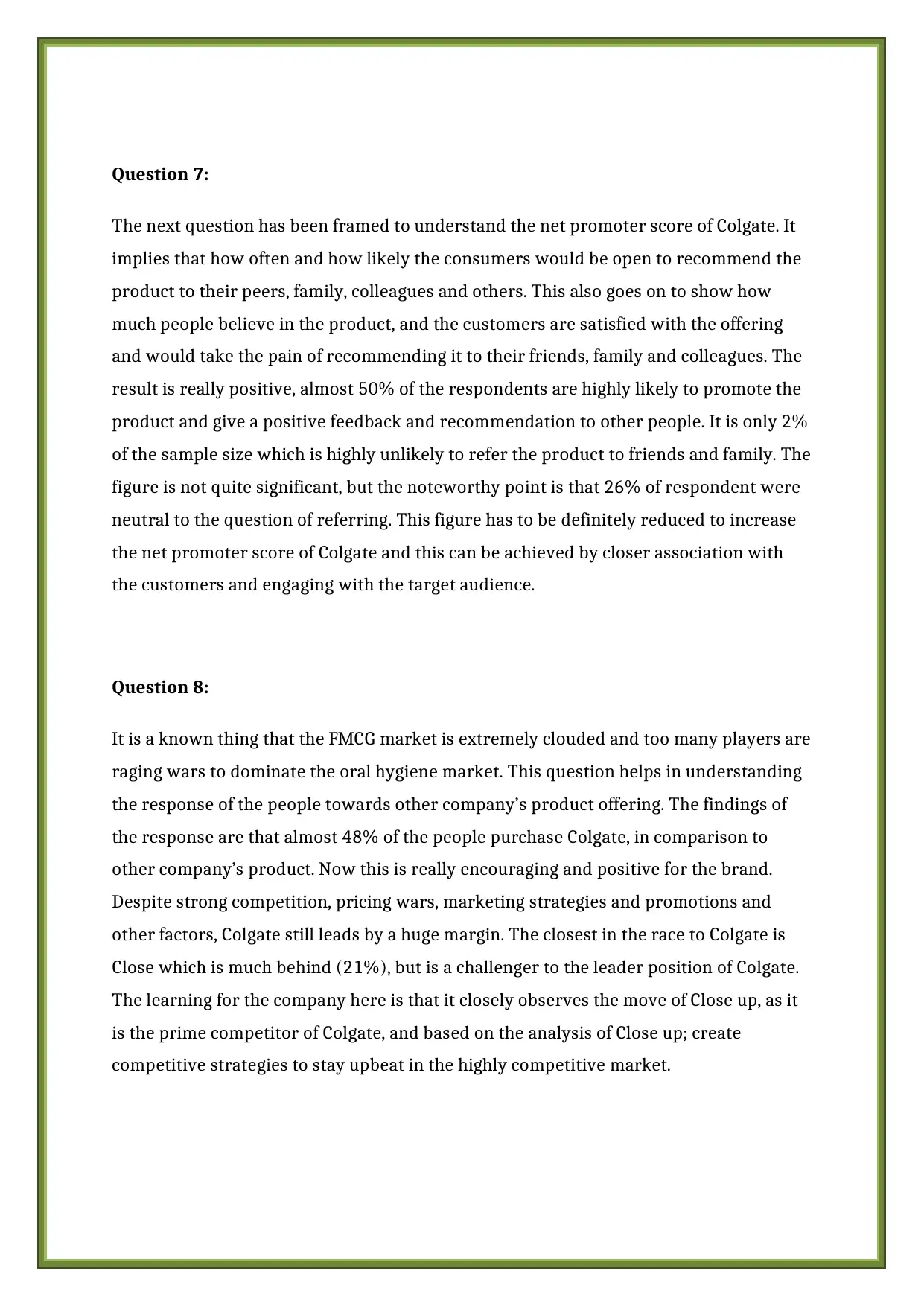
Question 7:
The next question has been framed to understand the net promoter score of Colgate. It
implies that how often and how likely the consumers would be open to recommend the
product to their peers, family, colleagues and others. This also goes on to show how
much people believe in the product, and the customers are satisfied with the offering
and would take the pain of recommending it to their friends, family and colleagues. The
result is really positive, almost 50% of the respondents are highly likely to promote the
product and give a positive feedback and recommendation to other people. It is only 2%
of the sample size which is highly unlikely to refer the product to friends and family. The
figure is not quite significant, but the noteworthy point is that 26% of respondent were
neutral to the question of referring. This figure has to be definitely reduced to increase
the net promoter score of Colgate and this can be achieved by closer association with
the customers and engaging with the target audience.
Question 8:
It is a known thing that the FMCG market is extremely clouded and too many players are
raging wars to dominate the oral hygiene market. This question helps in understanding
the response of the people towards other company’s product offering. The findings of
the response are that almost 48% of the people purchase Colgate, in comparison to
other company’s product. Now this is really encouraging and positive for the brand.
Despite strong competition, pricing wars, marketing strategies and promotions and
other factors, Colgate still leads by a huge margin. The closest in the race to Colgate is
Close which is much behind (21%), but is a challenger to the leader position of Colgate.
The learning for the company here is that it closely observes the move of Close up, as it
is the prime competitor of Colgate, and based on the analysis of Close up; create
competitive strategies to stay upbeat in the highly competitive market.
The next question has been framed to understand the net promoter score of Colgate. It
implies that how often and how likely the consumers would be open to recommend the
product to their peers, family, colleagues and others. This also goes on to show how
much people believe in the product, and the customers are satisfied with the offering
and would take the pain of recommending it to their friends, family and colleagues. The
result is really positive, almost 50% of the respondents are highly likely to promote the
product and give a positive feedback and recommendation to other people. It is only 2%
of the sample size which is highly unlikely to refer the product to friends and family. The
figure is not quite significant, but the noteworthy point is that 26% of respondent were
neutral to the question of referring. This figure has to be definitely reduced to increase
the net promoter score of Colgate and this can be achieved by closer association with
the customers and engaging with the target audience.
Question 8:
It is a known thing that the FMCG market is extremely clouded and too many players are
raging wars to dominate the oral hygiene market. This question helps in understanding
the response of the people towards other company’s product offering. The findings of
the response are that almost 48% of the people purchase Colgate, in comparison to
other company’s product. Now this is really encouraging and positive for the brand.
Despite strong competition, pricing wars, marketing strategies and promotions and
other factors, Colgate still leads by a huge margin. The closest in the race to Colgate is
Close which is much behind (21%), but is a challenger to the leader position of Colgate.
The learning for the company here is that it closely observes the move of Close up, as it
is the prime competitor of Colgate, and based on the analysis of Close up; create
competitive strategies to stay upbeat in the highly competitive market.
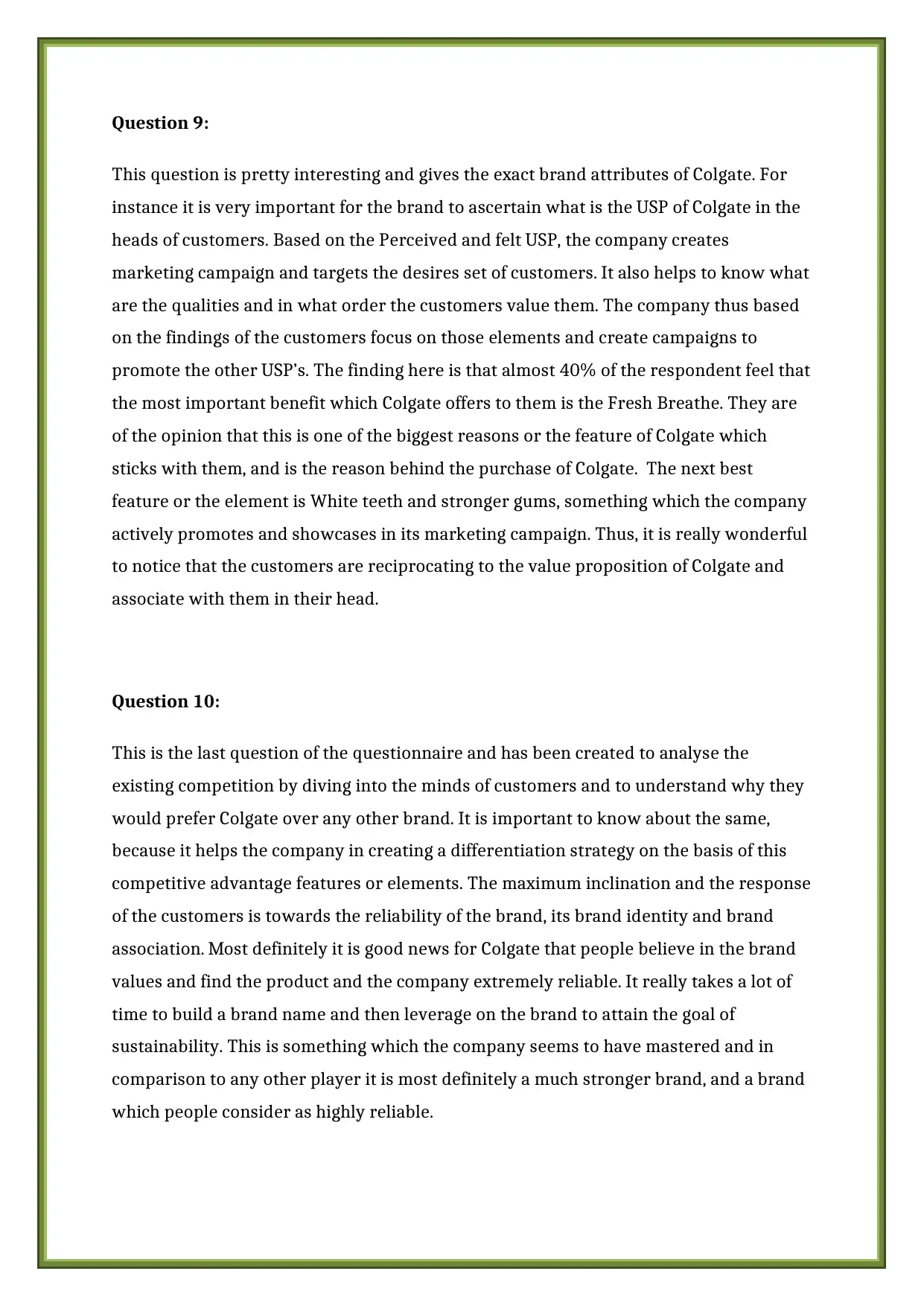
Question 9:
This question is pretty interesting and gives the exact brand attributes of Colgate. For
instance it is very important for the brand to ascertain what is the USP of Colgate in the
heads of customers. Based on the Perceived and felt USP, the company creates
marketing campaign and targets the desires set of customers. It also helps to know what
are the qualities and in what order the customers value them. The company thus based
on the findings of the customers focus on those elements and create campaigns to
promote the other USP’s. The finding here is that almost 40% of the respondent feel that
the most important benefit which Colgate offers to them is the Fresh Breathe. They are
of the opinion that this is one of the biggest reasons or the feature of Colgate which
sticks with them, and is the reason behind the purchase of Colgate. The next best
feature or the element is White teeth and stronger gums, something which the company
actively promotes and showcases in its marketing campaign. Thus, it is really wonderful
to notice that the customers are reciprocating to the value proposition of Colgate and
associate with them in their head.
Question 10:
This is the last question of the questionnaire and has been created to analyse the
existing competition by diving into the minds of customers and to understand why they
would prefer Colgate over any other brand. It is important to know about the same,
because it helps the company in creating a differentiation strategy on the basis of this
competitive advantage features or elements. The maximum inclination and the response
of the customers is towards the reliability of the brand, its brand identity and brand
association. Most definitely it is good news for Colgate that people believe in the brand
values and find the product and the company extremely reliable. It really takes a lot of
time to build a brand name and then leverage on the brand to attain the goal of
sustainability. This is something which the company seems to have mastered and in
comparison to any other player it is most definitely a much stronger brand, and a brand
which people consider as highly reliable.
This question is pretty interesting and gives the exact brand attributes of Colgate. For
instance it is very important for the brand to ascertain what is the USP of Colgate in the
heads of customers. Based on the Perceived and felt USP, the company creates
marketing campaign and targets the desires set of customers. It also helps to know what
are the qualities and in what order the customers value them. The company thus based
on the findings of the customers focus on those elements and create campaigns to
promote the other USP’s. The finding here is that almost 40% of the respondent feel that
the most important benefit which Colgate offers to them is the Fresh Breathe. They are
of the opinion that this is one of the biggest reasons or the feature of Colgate which
sticks with them, and is the reason behind the purchase of Colgate. The next best
feature or the element is White teeth and stronger gums, something which the company
actively promotes and showcases in its marketing campaign. Thus, it is really wonderful
to notice that the customers are reciprocating to the value proposition of Colgate and
associate with them in their head.
Question 10:
This is the last question of the questionnaire and has been created to analyse the
existing competition by diving into the minds of customers and to understand why they
would prefer Colgate over any other brand. It is important to know about the same,
because it helps the company in creating a differentiation strategy on the basis of this
competitive advantage features or elements. The maximum inclination and the response
of the customers is towards the reliability of the brand, its brand identity and brand
association. Most definitely it is good news for Colgate that people believe in the brand
values and find the product and the company extremely reliable. It really takes a lot of
time to build a brand name and then leverage on the brand to attain the goal of
sustainability. This is something which the company seems to have mastered and in
comparison to any other player it is most definitely a much stronger brand, and a brand
which people consider as highly reliable.
⊘ This is a preview!⊘
Do you want full access?
Subscribe today to unlock all pages.

Trusted by 1+ million students worldwide
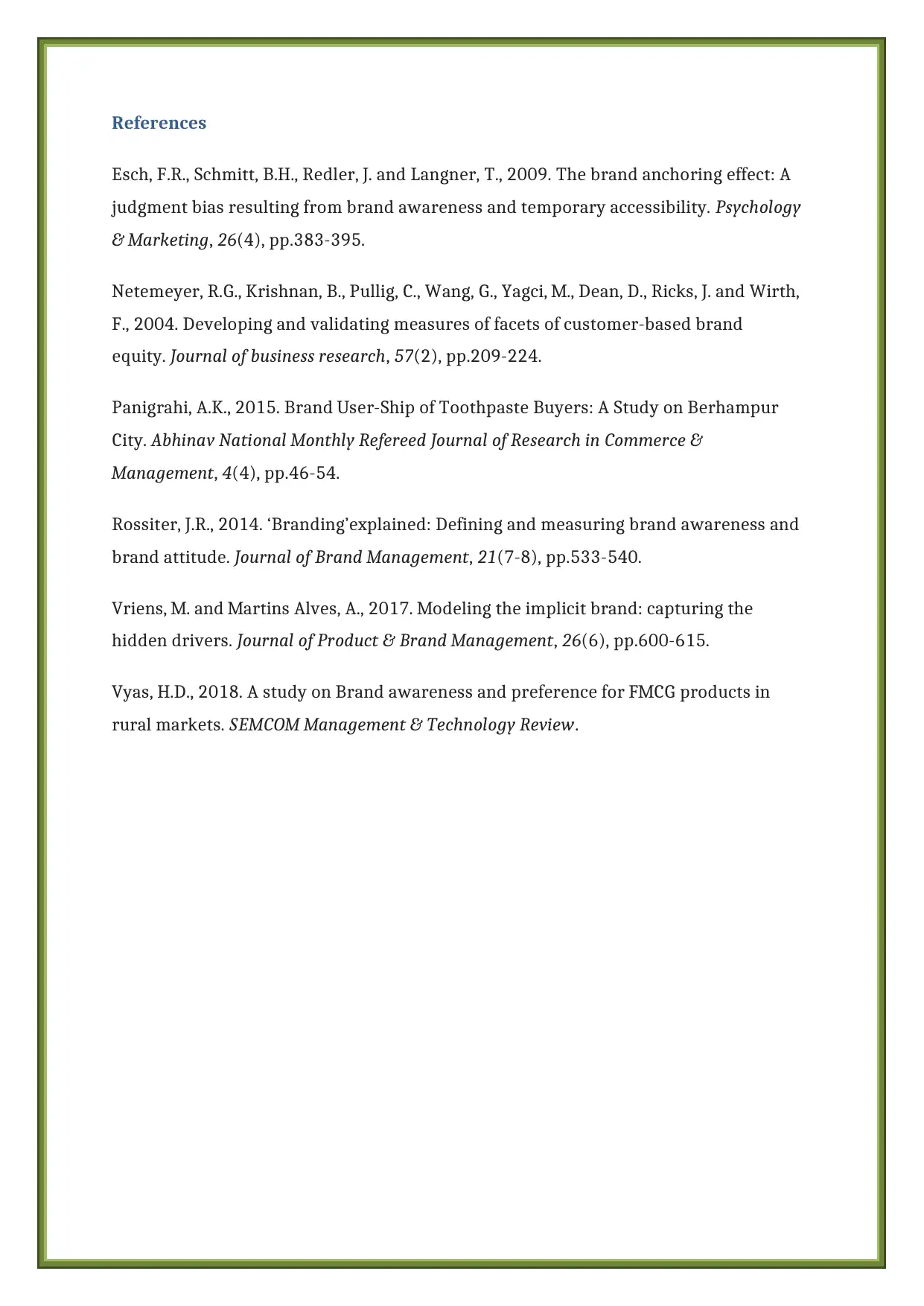
References
Esch, F.R., Schmitt, B.H., Redler, J. and Langner, T., 2009. The brand anchoring effect: A
judgment bias resulting from brand awareness and temporary accessibility. Psychology
& Marketing, 26(4), pp.383-395.
Netemeyer, R.G., Krishnan, B., Pullig, C., Wang, G., Yagci, M., Dean, D., Ricks, J. and Wirth,
F., 2004. Developing and validating measures of facets of customer-based brand
equity. Journal of business research, 57(2), pp.209-224.
Panigrahi, A.K., 2015. Brand User-Ship of Toothpaste Buyers: A Study on Berhampur
City. Abhinav National Monthly Refereed Journal of Research in Commerce &
Management, 4(4), pp.46-54.
Rossiter, J.R., 2014. ‘Branding’explained: Defining and measuring brand awareness and
brand attitude. Journal of Brand Management, 21(7-8), pp.533-540.
Vriens, M. and Martins Alves, A., 2017. Modeling the implicit brand: capturing the
hidden drivers. Journal of Product & Brand Management, 26(6), pp.600-615.
Vyas, H.D., 2018. A study on Brand awareness and preference for FMCG products in
rural markets. SEMCOM Management & Technology Review.
Esch, F.R., Schmitt, B.H., Redler, J. and Langner, T., 2009. The brand anchoring effect: A
judgment bias resulting from brand awareness and temporary accessibility. Psychology
& Marketing, 26(4), pp.383-395.
Netemeyer, R.G., Krishnan, B., Pullig, C., Wang, G., Yagci, M., Dean, D., Ricks, J. and Wirth,
F., 2004. Developing and validating measures of facets of customer-based brand
equity. Journal of business research, 57(2), pp.209-224.
Panigrahi, A.K., 2015. Brand User-Ship of Toothpaste Buyers: A Study on Berhampur
City. Abhinav National Monthly Refereed Journal of Research in Commerce &
Management, 4(4), pp.46-54.
Rossiter, J.R., 2014. ‘Branding’explained: Defining and measuring brand awareness and
brand attitude. Journal of Brand Management, 21(7-8), pp.533-540.
Vriens, M. and Martins Alves, A., 2017. Modeling the implicit brand: capturing the
hidden drivers. Journal of Product & Brand Management, 26(6), pp.600-615.
Vyas, H.D., 2018. A study on Brand awareness and preference for FMCG products in
rural markets. SEMCOM Management & Technology Review.
Paraphrase This Document
Need a fresh take? Get an instant paraphrase of this document with our AI Paraphraser
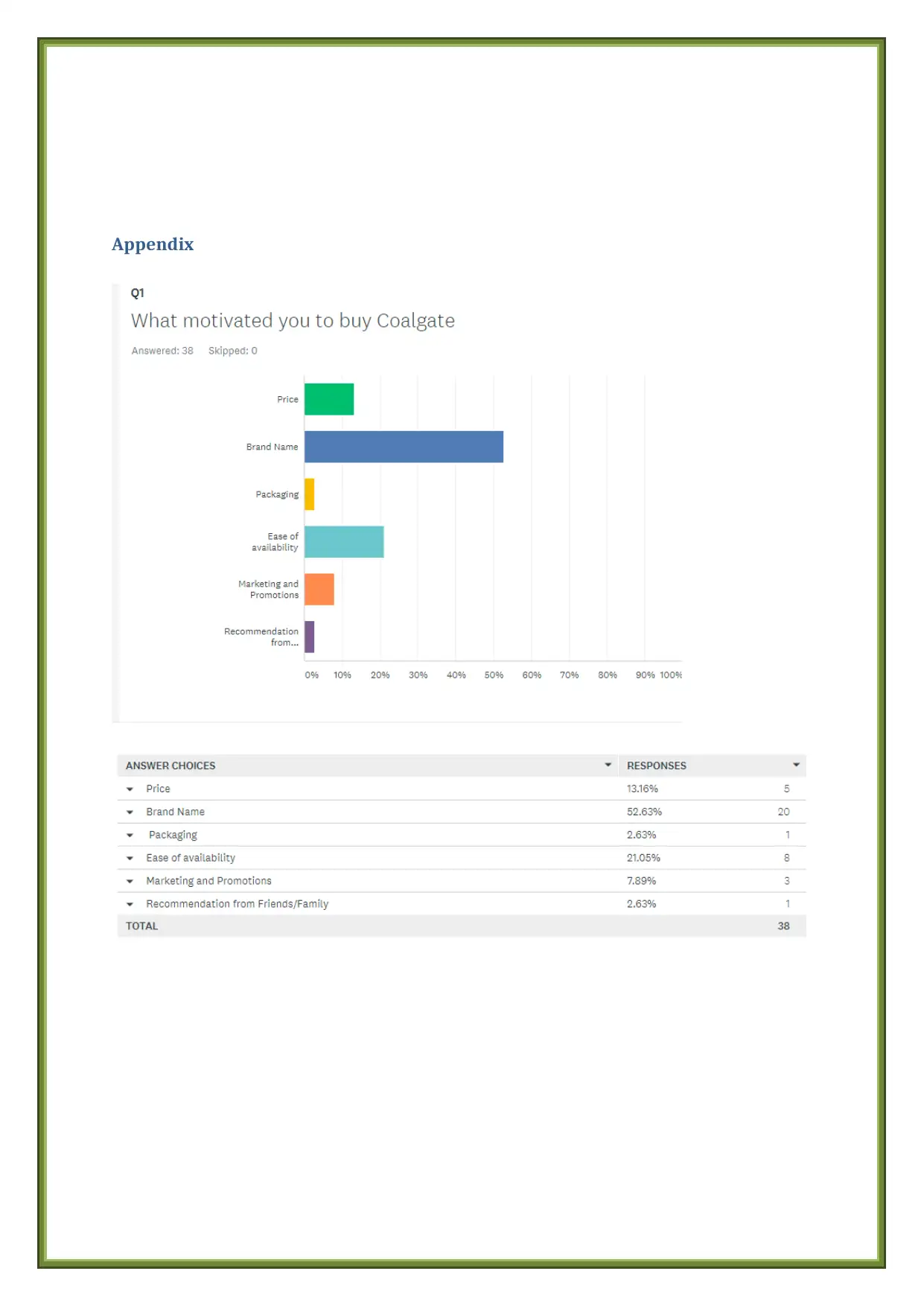
Appendix
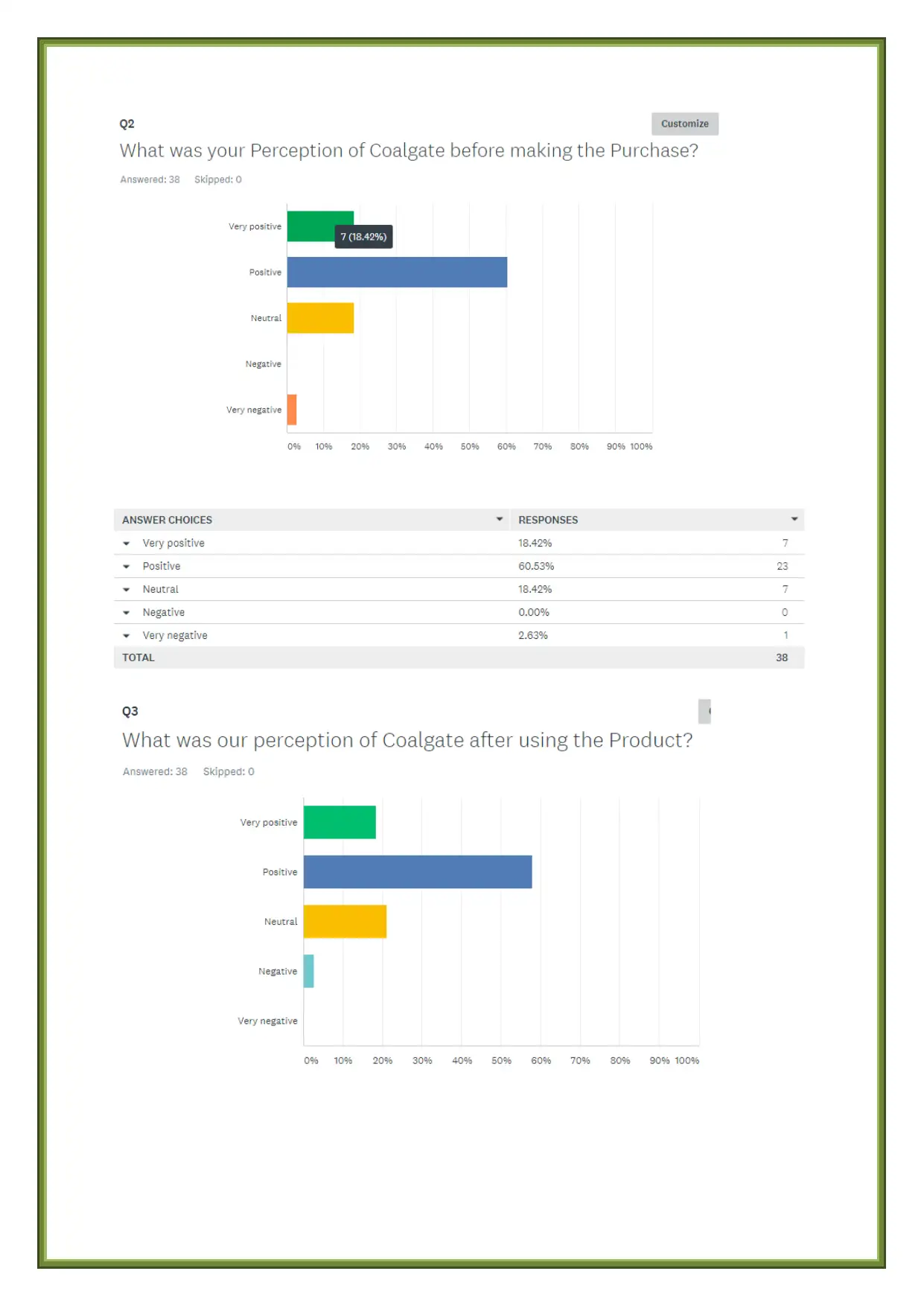
⊘ This is a preview!⊘
Do you want full access?
Subscribe today to unlock all pages.

Trusted by 1+ million students worldwide
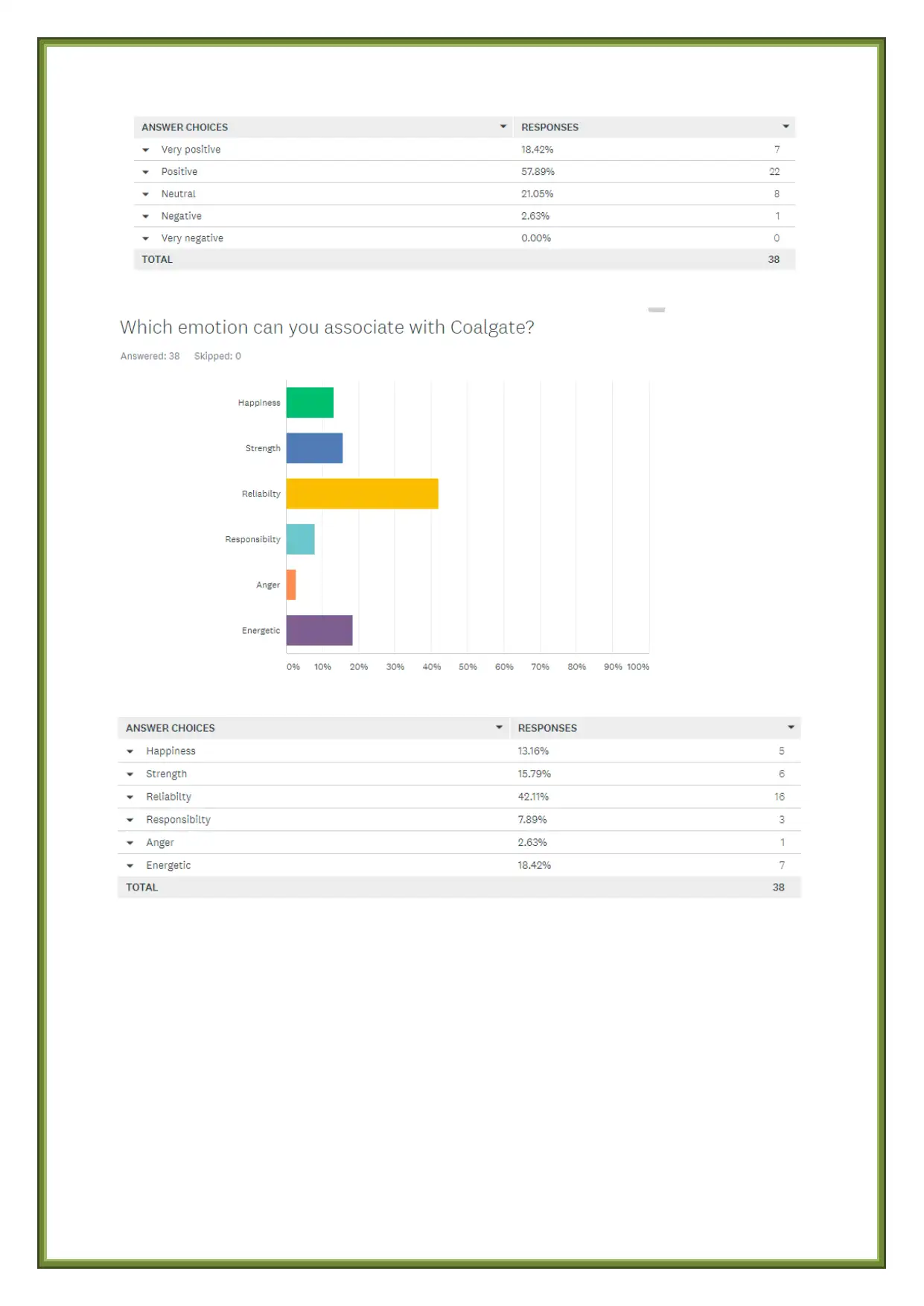
Paraphrase This Document
Need a fresh take? Get an instant paraphrase of this document with our AI Paraphraser
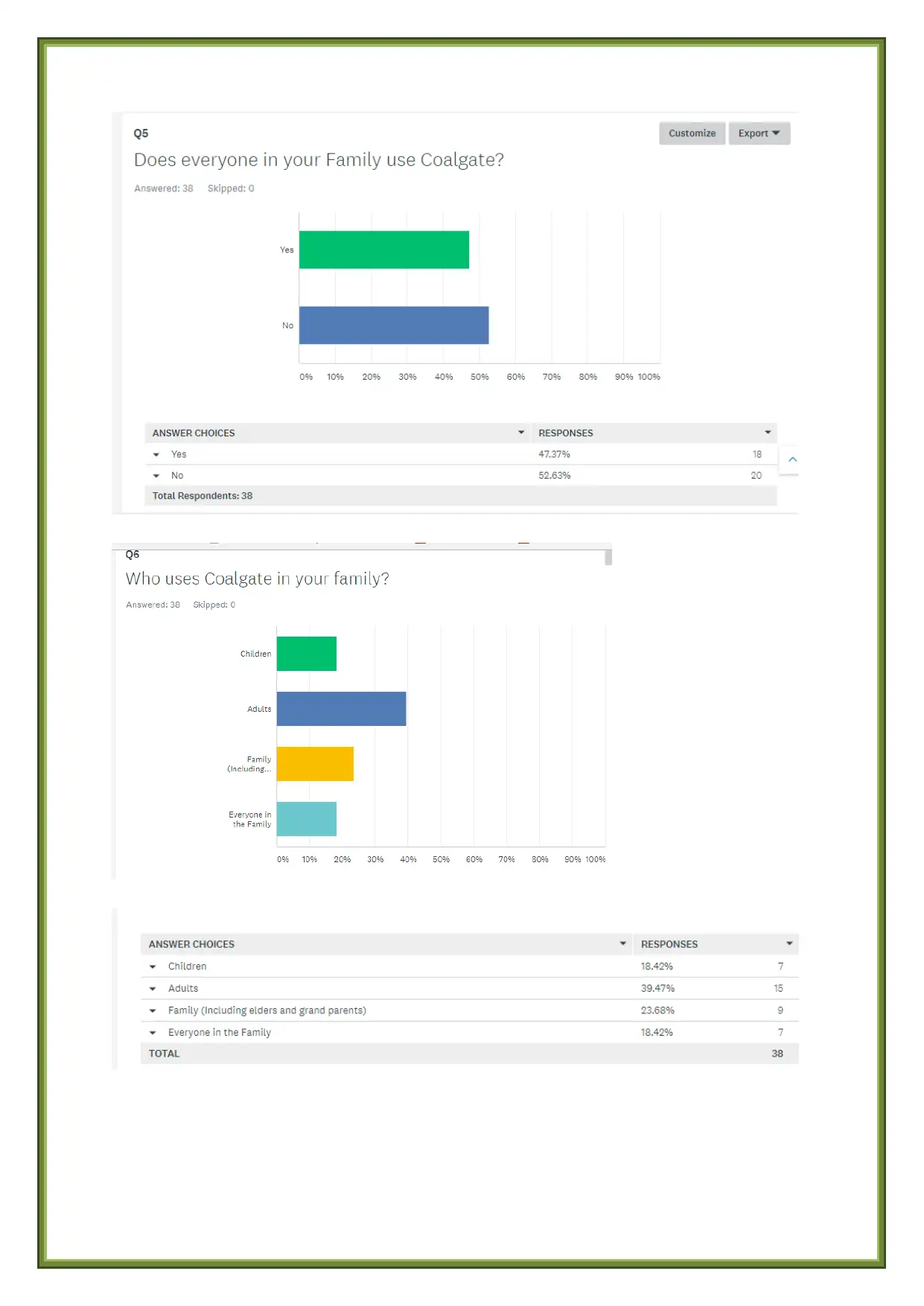
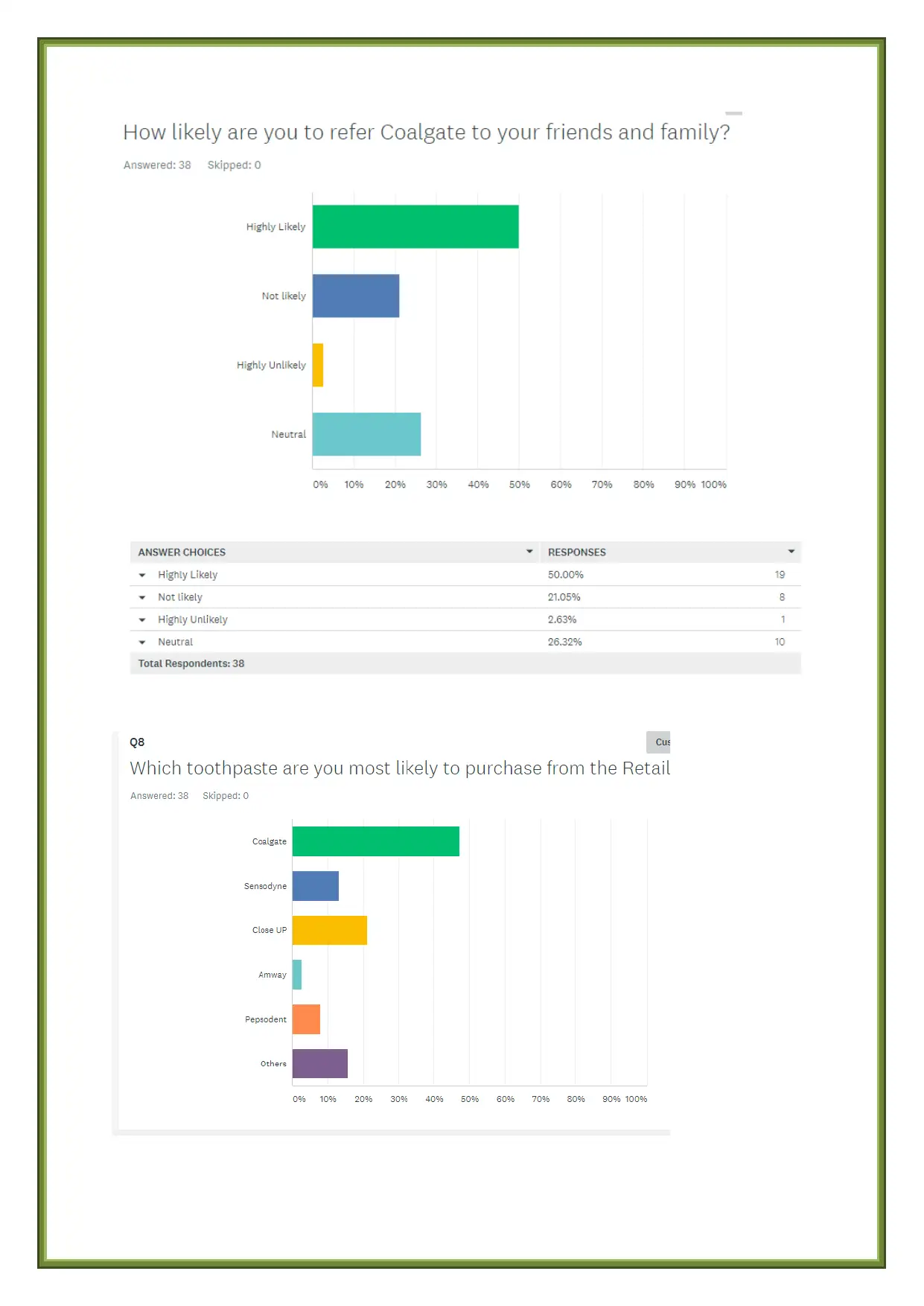
⊘ This is a preview!⊘
Do you want full access?
Subscribe today to unlock all pages.

Trusted by 1+ million students worldwide
1 out of 15
Related Documents
Your All-in-One AI-Powered Toolkit for Academic Success.
+13062052269
info@desklib.com
Available 24*7 on WhatsApp / Email
![[object Object]](/_next/static/media/star-bottom.7253800d.svg)
Unlock your academic potential
Copyright © 2020–2025 A2Z Services. All Rights Reserved. Developed and managed by ZUCOL.





